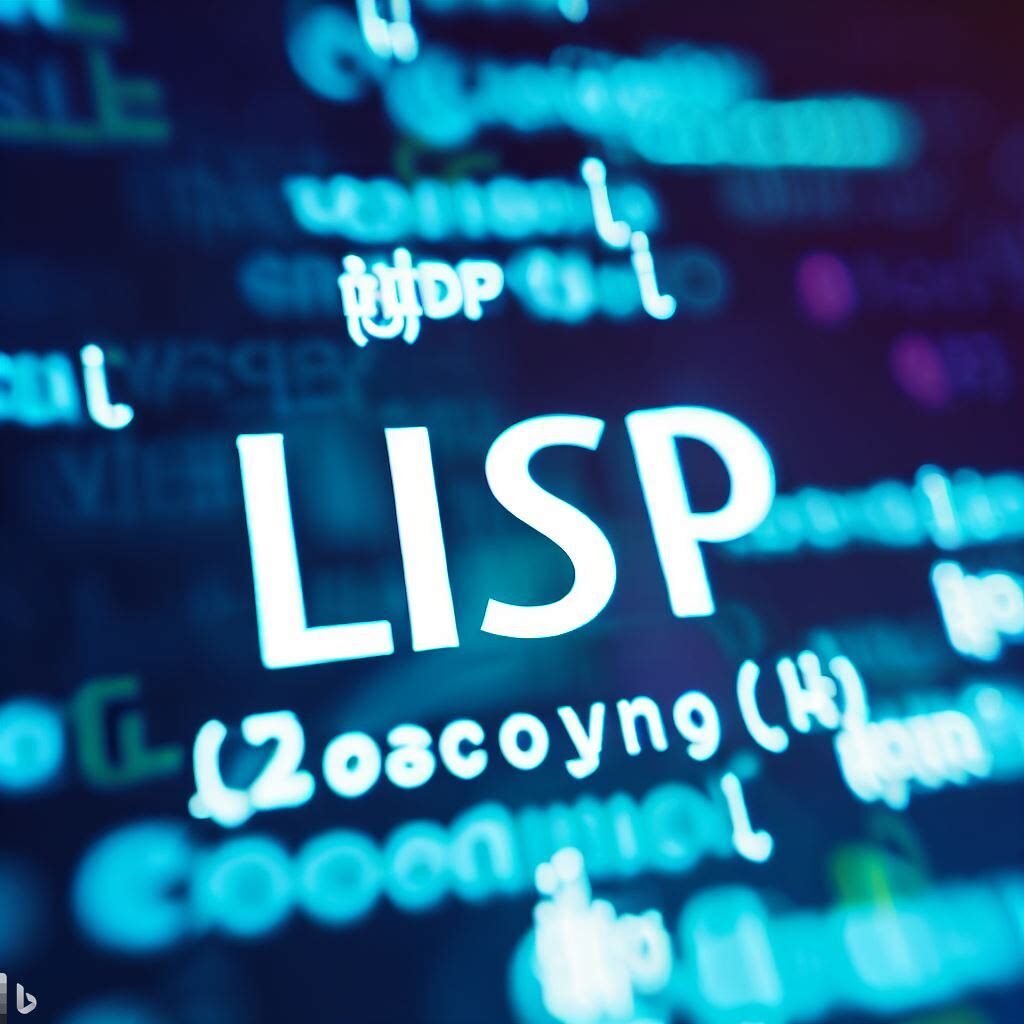
Klisp Lisp is a dialect of Lisp, a family of programming languages known for their distinctive parenthetical notation and powerful symbolic processing capabilities. Developed as an extension of the original Lisp language, Klisp Lisp incorporates some unique features that set it apart from other dialects.
In the vast landscape of programming languages, Klisp stands out as a robust and versatile option that caters to various coding needs. Whether you’re a seasoned developer or just starting your coding journey, exploring the advantages of Klisp can be incredibly rewarding. In this blog post, we’ll delve into the perks of using Klisp over other programming languages and why it should be on your radar.
Why Choose Klisp?
Simplicity and Clarity: klisp is renowned for its straightforward and easy-to-understand syntax. It allows programmers to write concise and clean code, making it a developer-friendly language, especially for beginners.
Functional and Object-Oriented Paradigm: klisp seamlessly integrates both functional and object-oriented programming paradigms, offering programmers the flexibility to choose the approach that best suits their project requirements.
Dynamic Typing: with dynamic typing, developers can save time and effort as they do not need to specify variable types explicitly. Klisp dynamically determines the data type during runtime, streamlining the coding process.
Great Community Support: despite being a relatively newer language, Klisp boasts a growing community of dedicated developers who actively contribute to its expansion and support. This strong community presence ensures quick issue resolution and frequent updates.
Concurrent Programming: klisp excels in handling concurrent tasks, making it an ideal choice for applications that require efficient multitasking capabilities. This is particularly advantageous in today’s fast-paced technological landscape.
Leveraging Klisp for Future Success
As technology continues to rapidly evolve, having the right programming language in your toolkit is becoming more and more important. Klisp offers unique features that set it apart from its peers, making it a smart investment for your future projects.
Klisp’s versatility extends to its ability to work seamlessly across multiple platforms. Whether you’re developing apps for Windows, macOS, Linux, or mobile, Klisp ensures a smooth experience in all environments.
Klisp also has a modular design that allows developers to break their projects into manageable components. This modularity not only simplifies code maintenance, but also promotes collaborative development, making it easier for teams to work together effectively.
Being relatively young, Klisp already offers a number of libraries and frameworks that speed up development and minimize the need to build everything from scratch. These libraries cover a wide range of functionality, from GUI development to networking, increasing your productivity.
In the era of multi-core processors and parallel computing, Klisp is thriving. Its built-in support for parallelism allows developers to easily write parallel code, making it an excellent choice for high-performance applications and services.
Clear and comprehensive documentation is a developer’s best friend. Klisp is no exception, providing well-documented resources to help you understand and use its features effectively.
Comparing Klisp with Other Programming Languages
When evaluating the advantages of Klisp, it’s essential to compare it with other popular programming languages to understand its unique strengths and differences.
Klisp vs. Python:
Syntax: klisp’s syntax is more concise and cleaner compared to Python, making it easier for developers to read and write code.Concurrency: klisp’s built-in concurrency support gives it an edge over Python, which requires additional modules for concurrent programming.
Type System: while both languages are dynamically typed, Klisp’s dynamic typing offers more flexibility, allowing developers to change variable types at runtime.
Community Support: Python boasts a larger and more established community, but Klisp’s community is rapidly growing and becoming more vibrant.
Klisp vs. Java:
Ease of Learning: klisp’s simplicity and clear syntax make it more beginner-friendly than Java, which has a steeper learning curve.
Performance: java’s performance is often better suited for resource-intensive applications, but Klisp’s concurrent programming capabilities give it an advantage in specific scenarios.
Platform Independence: Java’s “write once, run anywhere” capability gives it a clear advantage in cross-platform development, while Klisp requires some additional effort in this regard.
Community Maturity: Java’s extensive history has resulted in a mature and robust community, while Klisp’s community is still evolving.
Klisp vs. JavaScript:
Application Domain: JavaScript is primarily used for web development, while Klisp is more versatile and can be employed in various domains, including web development, systems programming, and more.
Concurrency: klisp’s concurrency features outshine JavaScript, which relies on callbacks and asynchronous programming for concurrency.
Functional Paradigm: Both languages support functional programming, but Klisp’s seamless integration of functional and object-oriented paradigms makes it more appealing to developers seeking flexibility.
Tooling and Libraries: JavaScript’s vast ecosystem and extensive libraries offer a more mature development environment compared to Klisp, but Klisp’s library collection is continuously growing.
Working with Variables and Data Types in Klisp
In addition to its remarkable advantages over other programming languages, Klisp offers a seamless experience when working with variables and data types. Understanding how Klisp handles variables and data is crucial for harnessing the full potential of this dynamic language.
Klisp’s dynamic typing system allows developers to create variables without specifying their data types explicitly. This flexibility enables quick and fluid adjustments during the development process, making it easier to adapt to changing requirements.
In Klisp, declaring variables is a breeze. A simple statement is all it takes to create and initialize a variable. This ease of use significantly enhances the coding experience and reduces the time spent on mundane syntax-related tasks.
Klisp provides robust support for various data types, allowing developers to work with numbers, strings, lists, and more. The language’s intuitive design encourages data abstraction, making it simpler to represent complex concepts in a clear and concise manner.
Klisp introduces the concept of immutability, ensuring that once a data structure is created, its contents cannot be modified. This feature proves invaluable in scenarios where data integrity is paramount, as it helps prevent unintended changes.
Klisp comes equipped with a rich set of built-in functions for data manipulation. Whether it’s searching for specific elements in a list or performing mathematical operations on numerical data, Klisp provides powerful tools to streamline these tasks.

In conclusion, the advantages of using this programming language compared to others are both compelling and significant, positioning Klisp as a formidable contender in the ever-growing landscape of programming languages. Klisp’s unique features, coupled with its emphasis on simplicity, flexibility, and concurrency, make it an attractive choice for developers seeking a powerful and efficient coding language.
One of Klisp’s standout advantages is its simplicity and clarity in syntax. Its user-friendly design allows developers to write concise and clean code, making it accessible to both beginners and seasoned programmers. The ease of learning and understanding Klisp’s syntax accelerates the development process, enabling faster iterations and smoother collaboration among team members.
Furthermore, Klisp’s seamless integration of functional and object-oriented paradigms provides developers with the flexibility to choose the approach that best suits their project needs. This unique combination empowers developers to create elegant and efficient solutions, harnessing the best of both worlds to achieve their coding objectives.
The dynamic typing system in Klisp further enhances its appeal. Developers can create variables without specifying their data types explicitly, reducing the overhead of type declarations and facilitating rapid prototyping. Klisp’s ability to determine data types during runtime ensures adaptability to evolving project requirements, allowing for smoother code modifications and maintenance.
Klisp’s community support, though still growing, is a testament to its potential. A dedicated and active community ensures quick issue resolution, fosters knowledge sharing, and encourages collaborative development. As the community expands, so will the wealth of resources, libraries, and tools available to Klisp developers, further enriching the language’s ecosystem.
Another undeniable advantage of Klisp is its concurrency support. In today’s fast-paced technological landscape, the need for efficient multitasking capabilities is crucial. Klisp excels in handling concurrent tasks, making it an ideal choice for applications that require high-performance and efficient execution.
Klisp’s cross-platform compatibility is also noteworthy. With its ability to run on multiple platforms seamlessly, developers can target a wide range of devices and operating systems, ensuring broader accessibility and deployment options for their projects.
The rich library support in Klisp further contributes to its advantages. Although a relatively newer language, Klisp already offers an array of libraries and frameworks that expedite development and reduce the need to reinvent the wheel. This growing collection of libraries covers a broad spectrum of functionalities, empowering developers to build robust and feature-rich applications with ease.
Unlocking the full potential of Klisp in your projects means embracing a language that embodies the timeless principles of Lisp while adapting to the demands of modern computing. With Klisp, developers can achieve greater efficiency, elegance, and versatility in their code, empowering them to create exceptional software solutions that stand at the forefront of the dynamic and ever-evolving programming landscape. As technology continues to advance, Klisp promises to remain a valuable and competitive choice, driving innovation, fostering creativity, and shaping the future of coding. Embrace the advantages of Klisp today and witness firsthand its transformative impact on your coding endeavors.